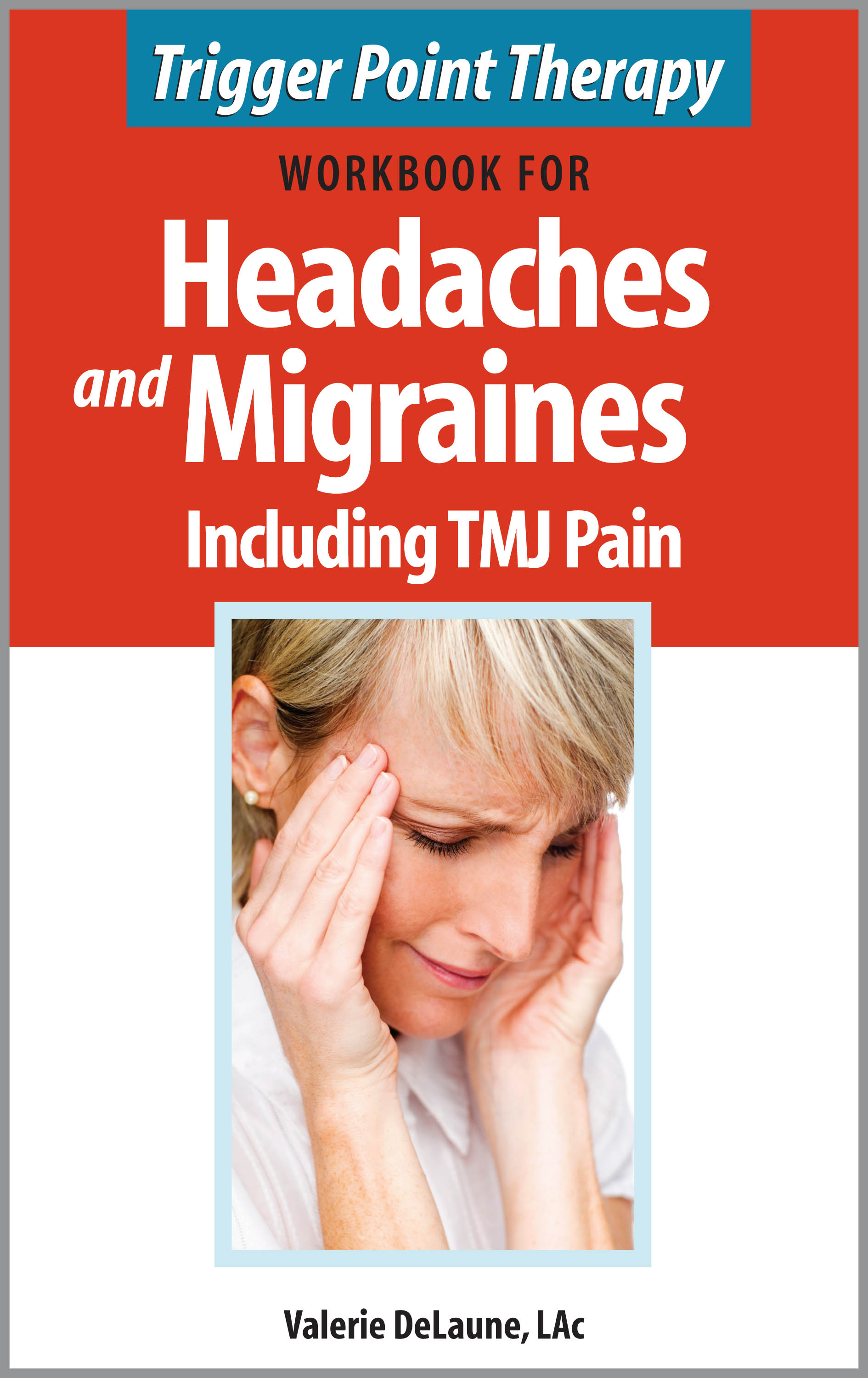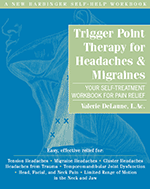
CHAPTER 1: What Are Trigger Points? (Excerpt)
In this chapter you’ll learn what trigger points are, how they form, and what it feels like when they’re pressed. You’ll also learn how they refer pain to areas of the body remote from the trigger point itself, what symptoms they can cause other than pain, and what happens when they’re left untreated.
Characteristics of Trigger Points
Muscle is the largest organ in the human body, typically accounting for almost 50 percent of the body’s weight. There are approximately four hundred muscles in the human body (surprisingly, there are individual variations), and any one of them can develop trigger points, potentially causing referred pain and dysfunction. Symptoms can range from intolerable, agonizing pain to painless restriction of movement and distortion of posture.
Knots, Tight Bands, and Tenderness in the Muscle
Muscles consist of many muscle cells, or fibers, bundled together and surrounded by connective tissue. Each fiber contains numerous myofibrils. Most skeletal muscles contain approximately one thousand to two thousand myofibrils, and each myofibril consists of a chain of sarcomeres connected end-to-end. Muscular contractions take place in the sarcomere. When a trigger point is present, numerous sarcomeres are contracted into a small thickened area and the rest of the sarcomeres in the myofibril are stretched thin. Several of these contractures in the same area are probably what we feel as a “knot” or “tight band” in the muscle. These muscle fibers are not available for use because they are already contracted, which is why you cannot condition (strengthen) a muscle that contains trigger points.
When pressed, trigger points are usually very tender. The sustained contraction of the fibril probably leads to the release of ... The intensity of pain can also vary in response to flare-ups of any of the other perpetuating factors, such as ...
Healthy muscles usually do not contain knots or tight bands, are not tender to pressure, and, when not in use, feel soft and pliable to the touch, not like ...
Referred Pain
Trigger points may refer pain both in the local area and/or to other areas of the body, and the most common patterns have been well documented and diagramed. These are called referral patterns. Approximately 74% of the time, trigger points are not located in the same place where you feel symptoms. This means that if you only work on the areas where you feel pain, you probably won’t get relief....
Weakness and Muscle Fatigue
Trigger points cause weakness and loss of coordination of the involved muscles, along with an inability of the muscles to tolerate use. Many people take this as a sign that they need to strengthen the weak muscles, but if the trigger points aren’t inactivated first, strengthening (conditioning) exercises will likely encourage the surrounding muscles to do the work instead of the muscle containing the trigger point, further weakening and deconditioning the muscle containing trigger points.
Muscles containing trigger points are fatigued more easily and don’t return to a relaxed state as quickly when use of the muscle ceases...
Other Symptoms
Trigger points can cause symptoms not normally associated with muscular problems, such as swelling, ringing in the ears, loss of balance, dizziness, urinary frequency, buckling knees, abnormal sweating, and tearing of the eyes. You may suffer from ...
Active Phase Versus Latent Phase
A trigger point can be in either an active or a latent phase, depending on how irritated it is. If the trigger point is active, it will refer pain or other sensations and limit range of motion. If the trigger point is latent, it may cause only decreased range of motion and weakness but not pain. The more frequent and intense your headaches, the greater the number of active trigger points you’re likely to have.
Trigger points that start with some impact to the muscle, such as an injury, are usually active initially. Poor posture or poor body mechanics, repetitive use, or a nerve root irritation can also form active trigger points. Active trigger points may at some point stop referring pain and become latent. However, these latent trigger points can easily become active again, ...
Latent trigger points can also develop gradually without being active first, and you don’t even know they are there...
Locations of Trigger Points Within the Muscles
A primary, or key, trigger point can cause a satellite, or secondary, trigger point to develop in a different muscle. It may form because it lies within...
What Happens When You Leave Trigger Points Untreated?
When people first develop some kind of pain problem, they usually wait to see if it will go away. Sometimes it does, and sometimes it doesn’t. The problem with “waiting to see” is that when trigger points are left untreated, muscles can be damaged, and eventually changes to the central nervous system can lead to a vicious cycle of pain. This central nervous system involvement probably explains why you are experiencing chronic headaches and pain.
Damage to the Muscle Fibers
Remember how trigger points cause portions of the myofibril to stay contracted? If this goes on too long, the myofibril may break in the middle, causing it to retract to each end and leave an empty shell in the middle. Muscle fibers damaged in this way cannot be repaired and will never be available for use again (Simons, Travell, and Simons 1999).
Central Nervous System Sensitization
Recent research (Borg-Stein and Simons 2002) has shown that certain types of nerve receptors in muscles relay information to neurons located within part of the gray matter of the spinal cord. The pain is amplified there and then is relayed to areas of other muscles, thereby expanding the region of pain beyond the initially affected area.
Once this part of the central nervous system is involved, or sensitized, in this way (called central sensitization), the persistent pain leads to long-term or permanent changes in these neurons, which affect adjacent neurons through neurotransmitters...
How Trigger Points Form
Trigger points may form after a sudden trauma or injury, or they may develop gradually. Common initiating and perpetuating factors are mechanical stresses, injuries, nutritional problems, emotional factors, sleep problems, acute or chronic infections, organ dysfunction and disease, and other medical conditions. Part II goes into detail about these causes and perpetuators of trigger points.
Part of the current hypothesis about the mechanism responsible for the formation of trigger points is the energy crisis component theory...
Conclusion
Trigger points are tender when pressed, and the multiple contractures forming the trigger point may feel like a small lump in the muscle. Healthy muscles don’t contain trigger points, and they don’t feel tender with pressure. If trigger points are left untreated, the damage to the muscle cells can be irreparable and can even cause long-term changes in the central nervous system, leading to a self-perpetuating cycle of trigger points, pain, and muscular damage. Trigger points can cause symptoms other than pain, which should be taken into consideration and may help you determine the location of your trigger points. This is particularly important when the referral pattern deviates from the common pattern, making the location of the trigger points harder to determine.
In the next chapter* you’ll learn more about treating trigger points and when you should see a doctor.
*Chapter 2 is not available for preview online. Purchase "Trigger Point Therapy for Headaches & Migraines" to access the full text.
These Sample Chapters are reprinted with permission from New Harbinger Publications, Inc. "Trigger Point Therapy for Headaches & Migraines: Your Self-Treatment Workbook for Pain Relief," by Valerie DeLaune.



